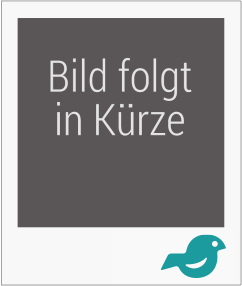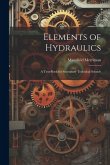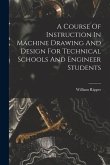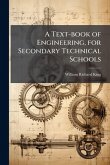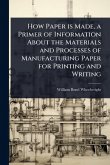Phillip A. Laplante (The Pennsylvania State University, Malvern, US, Chris Laplante
Technical Writing
A Practical Guide for Engineers, Scientists, and Nontechnical Professionals
Phillip A. Laplante (The Pennsylvania State University, Malvern, US, Chris Laplante
Technical Writing
A Practical Guide for Engineers, Scientists, and Nontechnical Professionals
- Broschiertes Buch
- Merkliste
- Auf die Merkliste
- Bewerten Bewerten
- Teilen
- Produkt teilen
- Produkterinnerung
- Produkterinnerung
This guide complements traditional technical writing manuals through first-hand examples that help readers understand practical considerations in writing technical content. The new edition includes new exercises and case studies and new content on software/systems documentation, popular writing tools, and technologies like generative AI.
Andere Kunden interessierten sich auch für
![Elements of Hydraulics: A Text-Book for Secondary Technical Schools Elements of Hydraulics: A Text-Book for Secondary Technical Schools]() Mansfield MerrimanElements of Hydraulics: A Text-Book for Secondary Technical Schools18,99 €
Mansfield MerrimanElements of Hydraulics: A Text-Book for Secondary Technical Schools18,99 €![A Course Of Instruction In Machine Drawing And Design For Technical Schools And Engineer Students A Course Of Instruction In Machine Drawing And Design For Technical Schools And Engineer Students]() William RipperA Course Of Instruction In Machine Drawing And Design For Technical Schools And Engineer Students24,99 €
William RipperA Course Of Instruction In Machine Drawing And Design For Technical Schools And Engineer Students24,99 €![A Text-book of Engineering, for Secondary Technical Schools A Text-book of Engineering, for Secondary Technical Schools]() William Richard KingA Text-book of Engineering, for Secondary Technical Schools25,99 €
William Richard KingA Text-book of Engineering, for Secondary Technical Schools25,99 €![Spons' Dictionary of Engineering, Civil, Mechanical, Military, and Naval; With Technical Terms in French, German, Italian, and Spanish Spons' Dictionary of Engineering, Civil, Mechanical, Military, and Naval; With Technical Terms in French, German, Italian, and Spanish]() Edward SponSpons' Dictionary of Engineering, Civil, Mechanical, Military, and Naval; With Technical Terms in French, German, Italian, and Spanish23,99 €
Edward SponSpons' Dictionary of Engineering, Civil, Mechanical, Military, and Naval; With Technical Terms in French, German, Italian, and Spanish23,99 €![Technical Control Of The Colloidal Matter Of Clays Technical Control Of The Colloidal Matter Of Clays]() Harrison Everett AshleyTechnical Control Of The Colloidal Matter Of Clays17,99 €
Harrison Everett AshleyTechnical Control Of The Colloidal Matter Of Clays17,99 €![How Paper is Made, a Primer of Information About the Materials and Processes of Manufacturing Paper for Printing and Writing How Paper is Made, a Primer of Information About the Materials and Processes of Manufacturing Paper for Printing and Writing]() William Bond WheelwrightHow Paper is Made, a Primer of Information About the Materials and Processes of Manufacturing Paper for Printing and Writing15,99 €
William Bond WheelwrightHow Paper is Made, a Primer of Information About the Materials and Processes of Manufacturing Paper for Printing and Writing15,99 €![Advanced Metal-work: Lessons On The Speed-lathe, Engine-lathe, And Planing-machine, For The Use Of Technical Schools, Manual-training Schoo Advanced Metal-work: Lessons On The Speed-lathe, Engine-lathe, And Planing-machine, For The Use Of Technical Schools, Manual-training Schoo]() Alfred George ComptonAdvanced Metal-work: Lessons On The Speed-lathe, Engine-lathe, And Planing-machine, For The Use Of Technical Schools, Manual-training Schoo18,99 €
Alfred George ComptonAdvanced Metal-work: Lessons On The Speed-lathe, Engine-lathe, And Planing-machine, For The Use Of Technical Schools, Manual-training Schoo18,99 €-
-
-
This guide complements traditional technical writing manuals through first-hand examples that help readers understand practical considerations in writing technical content. The new edition includes new exercises and case studies and new content on software/systems documentation, popular writing tools, and technologies like generative AI.
Produktdetails
- Produktdetails
- What Every Engineer Should Know
- Verlag: Taylor & Francis Ltd
- 3 ed
- Seitenzahl: 272
- Erscheinungstermin: 24. November 2025
- Englisch
- Abmessung: 234mm x 156mm x 15mm
- Gewicht: 414g
- ISBN-13: 9781032843742
- ISBN-10: 1032843748
- Artikelnr.: 74443511
- Herstellerkennzeichnung
- Libri GmbH
- Europaallee 1
- 36244 Bad Hersfeld
- gpsr@libri.de
- What Every Engineer Should Know
- Verlag: Taylor & Francis Ltd
- 3 ed
- Seitenzahl: 272
- Erscheinungstermin: 24. November 2025
- Englisch
- Abmessung: 234mm x 156mm x 15mm
- Gewicht: 414g
- ISBN-13: 9781032843742
- ISBN-10: 1032843748
- Artikelnr.: 74443511
- Herstellerkennzeichnung
- Libri GmbH
- Europaallee 1
- 36244 Bad Hersfeld
- gpsr@libri.de
Phil Laplante is a Professor Emeritus of Software and Systems Engineering at Penn State with more than 40 years of experience as a professor, practitioner, academic administrator, and consultant. He has worked in avionics, CAD, and software testing systems and he has published 40+ books and more than 300 scholarly papers. He is a licensed professional engineer in the Commonwealth of Pennsylvania and a Fellow of IEEE, SPIE and the Washington Academy of Sciences. From 2010 to 2017 he led the effort to develop a national licensing exam for software engineers. He received his B.S., M.Eng., and Ph.D. from Stevens Institute of Technology and an MBA from the University of Colorado. Chris Laplante is a software engineer at Agilent Technologies where he works on embedded systems for gas chromatographs and automated liquid samplers. He is the author of many technical documents and reports and has published articles in technical forums, newsletters, and magazines. He is the co-author (with Phil Laplante) of Introduction to Chaos, Fractals and Dynamical Systems, World Scientific Publishing, 2023. He received his B.S. in Computer Science (with a minor in Mathematics) from The Pennsylvania State University. His professional interests include Linux, real-time operating systems (RTOSs), Rust, C++, and digital electronics.
0. Front Matter. 1. The Nature of Technical Writing. 2. Technical Writing
Basics. 3. The Writing Process. 4. Scientific Writing. 5. Business
Communications. 6. Technical Reporting. 7. Using Graphical Elements. 8.
Publishing Your Work. 9. Writing for the Digital Age. 10. Writing with
Collaborators. Appendix A. Writing Checklist, Permissions Request. Appendix
B. Templates. Appendix C. Additional Writing Samples. Appendix D. Glossary
Basics. 3. The Writing Process. 4. Scientific Writing. 5. Business
Communications. 6. Technical Reporting. 7. Using Graphical Elements. 8.
Publishing Your Work. 9. Writing for the Digital Age. 10. Writing with
Collaborators. Appendix A. Writing Checklist, Permissions Request. Appendix
B. Templates. Appendix C. Additional Writing Samples. Appendix D. Glossary
0. Front Matter. 1. The Nature of Technical Writing. 2. Technical Writing
Basics. 3. The Writing Process. 4. Scientific Writing. 5. Business
Communications. 6. Technical Reporting. 7. Using Graphical Elements. 8.
Publishing Your Work. 9. Writing for the Digital Age. 10. Writing with
Collaborators. Appendix A. Writing Checklist, Permissions Request. Appendix
B. Templates. Appendix C. Additional Writing Samples. Appendix D. Glossary
Basics. 3. The Writing Process. 4. Scientific Writing. 5. Business
Communications. 6. Technical Reporting. 7. Using Graphical Elements. 8.
Publishing Your Work. 9. Writing for the Digital Age. 10. Writing with
Collaborators. Appendix A. Writing Checklist, Permissions Request. Appendix
B. Templates. Appendix C. Additional Writing Samples. Appendix D. Glossary

